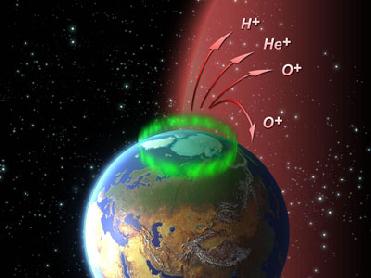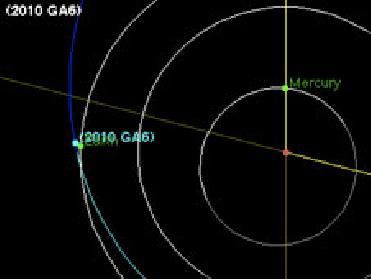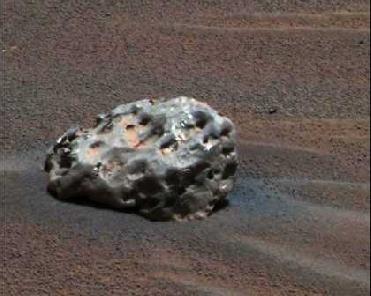
PARIS (BNS): Oxygen is constantly leaking out of the Earth's atmosphere into space. Now, European Space Agenecy’s formation-flying quartet of satellites, Cluster, has discovered the physical mechanism that is driving the leak. It has detected that the Earth's own magnetic field is accelerating the oxygen away.
The new study is analysing data collected by Cluster from 2001 to 2003. During this time, Cluster amassed information about beams of electrically charged oxygen atoms, known as ions, flowing outwards from the Polar Regions into space. Cluster also measured the strength and direction of the Earth's magnetic field whenever the beams were present.
Hans Nilsson, Swedish Institute of Space Physics headed a team of space scientists who analysed the data. They discovered that the oxygen ions were being accelerated by changes in the direction of the magnetic field. "It is a bit like a sling-shot effect," says Nilsson.
Having all four Cluster spacecraft was essential to the analysis because it gave astronomers a way to measure the strength and direction of the magnetic field over a wide area. "Cluster allowed us to measure the gradient of the magnetic field and see how it was changing direction with time," says Nilsson.
Before the space age, scientists believed that Earth's magnetic field was filled only with particles from the solar wind, the constant sleet of particles that escapes from the Sun. They thought this formed a large cushion that protected the Earth's atmosphere from direct interaction with the solar wind.
"We are beginning to realise just how many interactions can take place between the solar wind and the atmosphere," says Nilsson. Energetic particles from the solar wind can be channeled along the magnetic field lines and, when these impact the atmosphere of the Earth, they can produce aurorae. This occurs over the poles of Earth. The same interactions provide the oxygen ions with enough energy to accelerate out of the atmosphere and reach the Earth's magnetic environment.
The Cluster data was captured over the poles with the satellites flying at an altitude of anywhere between 30,000 and 64,000 kms. Measurements taken by earlier satellites during the 1980s and 1990s showed that the escaping ions were traveling faster and higher they were observed. This implied that some sort of acceleration mechanism was involved and several possibilities were proposed. Thanks to this new Cluster study, the mechanism accounting for most of the acceleration has now been identified. At present, the escape of oxygen is nothing to worry about. Compared to the Earth's stock of the life-supporting gas, the amount escaping is negligible. However, in the distant future when the Sun begins to heat up in old age, the balance might change and the oxygen escape may become significant. "We can only predict these future changes if we understand the mechanisms involved," says Nilsson.
For now, Cluster will continue collecting data and providing new insights into the complex magnetic environment surrounding the planet.
 Previous Article
Previous Article Next Article
Next Article













The Indian Air Force, in its flight trials evaluation report submitted before the Defence Ministry l..
view articleAn insight into the Medium Multi-Role Combat Aircraft competition...
view articleSky enthusiasts can now spot the International Space Station (ISS) commanded by Indian-American astr..
view article